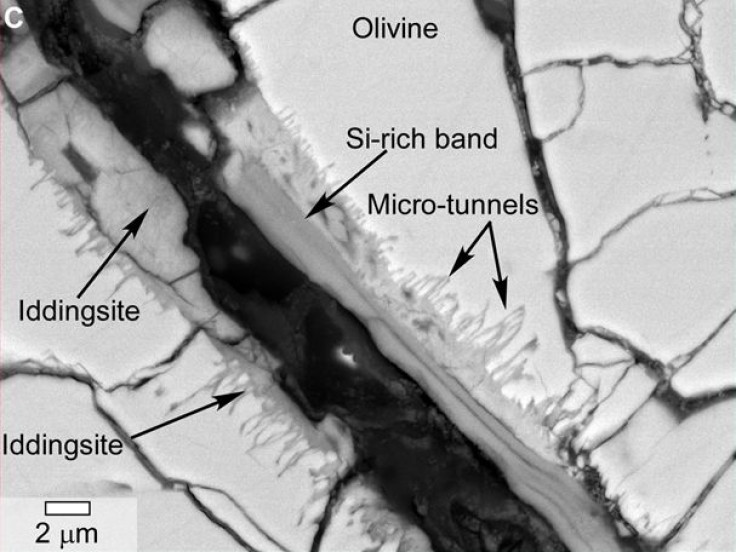NASA Scientists Discover Evidence Of Water In Meteorite From Mars

A team of scientists at NASA has found evidence of past water movement on a meteorite from Mars, reviving the long-standing debate whether life ever existed on the red planet.
As part of a new study, scientists at NASA’s Johnson Space Center in Houston examined structures deep within a 30-pound Martian meteorite known as Yamato 000593, and suggested that biological processes might have been at work on Mars hundreds of millions of years ago. The rock was found on the Yamato Glacier in Antarctica by the Japanese Antarctic Research Expedition in 2000.
“While robotic missions to Mars continue to shed light on the planet’s history, the only samples from Mars available for study on Earth are Martian meteorites,” Lauren White, of NASA’s Jet Propulsion Laboratory and the study’s lead author, said in a statement. “These samples offer clues to the past habitability of this planet. As more Martian meteorites are discovered, continued research focusing on these samples collectively will offer deeper insight into attributes which are indigenous to ancient Mars.”
According to the study, published in the February issue of the journal Astrobiology, the Martian meteorite was formed about 1.3 billion years ago from a lava flow on Mars. An impact occurred on Mars about 12 million years ago, ejecting the meteorite into space. The meteorite landed on Earth in Antarctica about 50,000 years ago.
The scientists found tunnel and micro-tunnel structures that thread their way throughout Yamato 000593. According to the scientists, the micro-tunnels have curved, undulating shapes that are common in special textures observed in terrestrial basaltic glasses that were previously reported by researchers who study interactions of bacteria with basaltic materials on Earth.
The researchers said that textural and compositional similarities to features in terrestrial samples, which have been interpreted as biogenic, imply that the Martian features on the meteorite were formed by biotic activity.
“The unique features displayed within the Martian meteorite Yamato 000593 are evidence of aqueous alterations as seen in the clay minerals and the presence of carbonaceous matter associated with the clay phases which show that Mars has been a very active body in its past,” Everett Gibson, a senior scientist at NASA, said. “The planet is revealing the presence of an active water reservoir that may also have a significant carbon component.”
© Copyright IBTimes 2024. All rights reserved.












